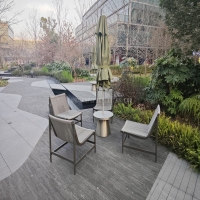Welcome to the website for landscape facilities products and knowledge.
What are the most common design flaws or weaknesses identified in the Landscape Round Table?
The Landscape Round Table, often celebrated for its aesthetic integration into natural or designed environments, has been subject to scrutiny by designers and engineers who have pinpointed several recurring design flaws. One of the most prevalent weaknesses is inadequate structural support, particularly at the joints and legs, which can lead to instability and potential collapse under regular use. This issue often stems from poor material selection, such as using non-weather-resistant woods or metals that corrode easily, resulting in premature degradation and safety hazards. Additionally, ergonomic oversights are common, with many models featuring uncomfortable seating heights or sharp edges that detract from user experience. Another frequent flaw is the lack of modularity or adaptability, limiting the table's functionality in diverse settings like gardens, parks, or indoor spaces. Surface treatment deficiencies, such as insufficient sealing against moisture, further exacerbate these problems, causing warping or discoloration over time. By addressing these weaknesses—through improved engineering, material upgrades, and user-centered design—the Landscape Round Table can evolve into a more durable and versatile piece of furniture that truly harmonizes with its surroundings while meeting practical needs.
Related search:

Recommendation
Metal structure rattan chair without armrests for single person, with woven seat and backrest.